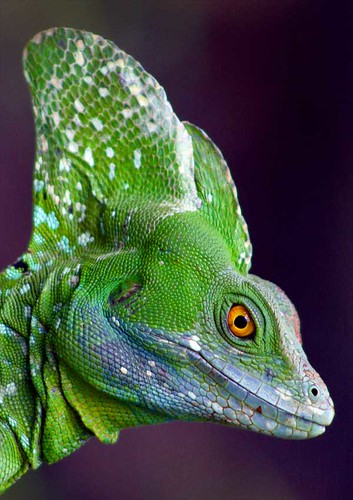What Do Costa Rica and Iceland Have In Common ?
Posted by Big Gav in costa rica, energy, iceland
Metaefficient has a post on Costa Rica's efforts to generate 100% of its electricity from renewable sources.
Costa Rica is a country rich with renewable energy. In fact, it gets about 99% of all its electrical energy from clean sources, and it’s aiming to be the first country to become carbon neutral. Some of Costa Rica’s energy sources include geothermal energy, the burning of sugarcane waste and other biomass, solar and wind energy. However, the largest source of energy is hydroelectricity — its hydroelectric dams provide more than 82% of the country’s electricity.
But the electric needs of Costa Rica are increasing, and the government now wants to build new dams that would displace indigenous villages and flood valuable habitats. Local environmental groups are opposing the construction of new hydroelectric dams.
Also, Costa Rica’s efforts to minimize its own contributions to global warming have made it especially vulnerable to climate changes caused by other countries. The reason is rain. Even a tiny shift in rainfall patterns could leave the country without enough water to meet its growing demand for electricity. And scientists say climate change is likely to have a significant effect on rainfall.
But Costa Rica is working to become the world’s first carbon-neutral country (other countries vying to be first are Monaco, Norway, New Zealand and Iceland). Costa Rica wants to become carbon neutral in time to celebrate 200 years of independence in 2021, says environment and energy minister Roberto Dobles.
Wind power might come to forefront in Costa Rica — a large wind farm with 22 turbines has been working in Tilarán, Guanacaste since 2002 and more are scheduled to be installed in the mountains of Escazú and Santa Ana. A new geothermal plant, using naturally-existing superheated water to power steam turbines, is also scheduled to be producing electricity in 2010 near Rincón de la Vieja Volcano, in the province of Guanacaste.
In some ways, Iceland couldn't be more different to Costa Rica - but it too is on the way to 100% renewables. Newsweek reports that Iceland Has Power to Burn.
Iceland's economy, which until recently relied largely on fishing, has diversified in recent years, with rapid growth in tourism, manufacturing and financial services. And like the Blue Lagoon, much of the growth has been a happy byproduct of Iceland's decades-long strategy of tapping sources of renewable energy. Mindful of climate change and the need to limit emissions, many U.S. states have set goals of obtaining 10 or 15 percent of their energy from renewables at some point in the distant future, and the European Union has pledged to reach 20 percent by 2020. But Iceland is already at about 80 percent. All electricity on the island is generated through geothermal or hydroelectric sources—low-emissions sources that don't use fossil fuels. Most homes are heated by water pumped from geothermal hot spots. "We are blessed with a lot of clean and renewable energy," Prime Minster Geir H. Haarde told NEWSWEEK. "The only uses of fossil fuels in Iceland are people using cars and the fishing fleet." And increasingly, Iceland, whose most prominent exports have been haddock and Björk, is devising ways to export what has been a stranded resource.
Iceland is a small island with a tiny, ethnically homogenous population: only 300,000, with more than half living in the capital, Reykjavik. It lacks coal reserves, and is endowed with massive glaciers, which produce huge volumes of water that can be harnessed to generate electricity. It also happens to sit atop a rift in the earth's crust that keeps significant reservoirs of heat bubbling near the surface. To a large degree, it is the polar opposite of the United States. Yet we—and other developed nations—can learn some valuable lessons from Iceland about what happens when a society commits to the systematic development of renewable energy.
From the cobblestone streets of downtown Reykjavik, the storybook-cute capital, to the stark fjords of the east, positive collateral benefits—many of them unintended—are evident. None looms larger than the new $1.5 billion Alcoa Fjardaal plant, which represents the largest single private-sector investment in Iceland's epic history.
... the American aluminum giant decided to build its first new smelter in 20 years near the town of Reydarfjordur, largely because of the promise of abundant clean power. Smelters require an immense amount of energy. Power-intensive companies like Alcoa are concerned both with their images and with the potential for initiatives that imposes costs on burning fossil fuels—from emission caps to carbon taxes. So when Landsvirkjun, the national utility, said it would build a 690-megawatt hydroelectric power plant 30 miles away, Alcoa took the plunge. Construction began in 2004, and today the massive plant—its 336 pots cover an expanse of nearly three quarters of a mile, the largest such line in the world—produces massive quantities of aluminum bars, coil and sheets. "It's almost the ideal place to invest, because of the combination of a highly skilled work force, an open and transparent democracy and the endless supplies of renewable energy," says Jake Siewert, vice president for environment, health and safety at Alcoa.






